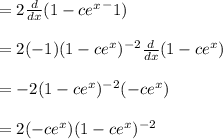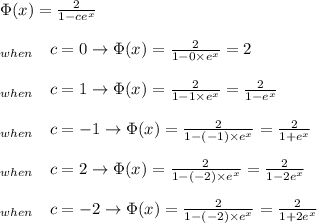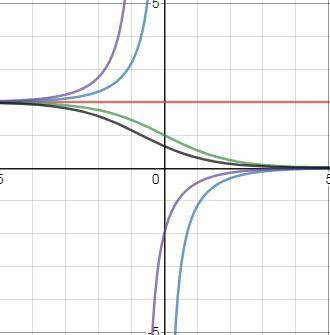
Mathematics, 02.09.2020 01:01 SarahBelle5663
Verify that ϕ(x)=2(1−cex), where cis an arbitrary constant, is a one-parameter family of solutions to dydx=y(y−2)2.Graph the solution curves corresponding to c=0,±1,±2using the same coordinate axes.

Answers: 1
Another question on Mathematics

Mathematics, 21.06.2019 16:30
Both the red and blue line segments stretch from the center of the circle to a point on the circle. the length of the blue segment is 5. how long is the red line segment?
Answers: 1

Mathematics, 21.06.2019 21:00
Graph the system of inequalities presented here on your own paper, then use your graph to answer the following questions: y < 4x − 8 y is greater than or equal to negative 5 over 2 times x plus 5 part a: describe the graph of the system, including shading and the types of lines graphed. provide a description of the solution area. (6 points) part b: is the point (5, −8) included in the solution area for the system? justify your answer mathematically. (4 points)
Answers: 3

Mathematics, 21.06.2019 22:10
Which property was used to simplify the expression? 3c+9 +4c=3c+4c+9
Answers: 3

Mathematics, 22.06.2019 00:00
One positive integer is 2 less than another. the product of the two integers is 24. what are the integers?
Answers: 1
You know the right answer?
Verify that ϕ(x)=2(1−cex), where cis an arbitrary constant, is a one-parameter family of solutions t...
Questions

Social Studies, 02.10.2020 23:01

Mathematics, 02.10.2020 23:01

Mathematics, 02.10.2020 23:01

Health, 02.10.2020 23:01

History, 02.10.2020 23:01

Geography, 02.10.2020 23:01


English, 02.10.2020 23:01


Chemistry, 02.10.2020 23:01

English, 02.10.2020 23:01


Social Studies, 02.10.2020 23:01

English, 02.10.2020 23:01


Mathematics, 02.10.2020 23:01

Mathematics, 02.10.2020 23:01


English, 02.10.2020 23:01

Mathematics, 02.10.2020 23:01



 , is a solution of the equation (a) only if when
, is a solution of the equation (a) only if when  :-
:-





![=2ce^x (1-ce^x)^{-2}=\frac{1}{2}[\frac{2}{1-ce^x}(\frac{2-2(1-ce^x)}{1-ce^x)}]\\\\= \frac{1}{1-ce^x} \times \frac{2ce^x}{1-ce^x}\\\\=\frac{2ce^x}{(1-ce^x)^2}\\\\=2ce^x (1-ce^x)^-2](/tpl/images/0737/4164/68276.png)






